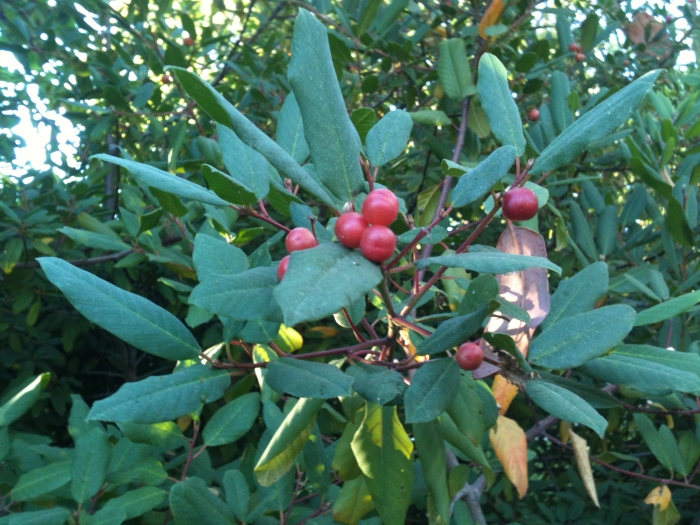California Coffeeberry
(Frangula californica)
California Coffeeberry (Frangula californica)
/
/

Brofri
CC BY-SA 3.0
Image By:
Brofri
Recorded By:
Copyright:
CC BY-SA 3.0
Copyright Notice:
Photo by: Brofri | License Type: CC BY-SA 3.0 | License URL: https://creativecommons.org/licenses/by-sa/3.0 | Uploader: Brofri | Publisher: Wikimedia Commons | Title: CoffeeBerryFruit.jpg | Notes: {{Information |Description ={{en|1=Location taken: North Carolina Arboretum, Asheville, NC. Names: Kalanchoe thyrsiflora 'Flap Jack', Flap Jack Kalancho Classification: Plantae > Angiosperms > Endicots > Saxifragales > Crassulaceae > Umbilice... |








































































Estimated Native Range
Summary
Frangula californica, commonly known as California Coffeeberry, is a versatile evergreen shrub native to chaparral, mixed evergreen forests, coastal sage scrub, and oak woodlands of western North America. It typically grows 3–12 feet (0.91–3.66 m) tall and is variable in form across subspecies. The plant features branches with a reddish tinge and new twigs that are often red. Its small, inconspicuous greenish flowers, about 1/8" in size, bloom in clusters in the leaf axils in May and June, with 5 sepals and 5 shorter petals. The fruit is a juicy drupe, transitioning in color from green to red to black as it matures, and is just under a centimeter long, containing two seeds that resemble coffee beans.
California Coffeeberry is appreciated for its adaptability, ease of maintenance, and the year-round interest it provides in gardens. It offers edible fruits that attract birds and other wildlife, and its dense foliage makes it suitable for use as a hedge or screen. Additionally, it is a valuable pollinator plant for native butterflies and bees. In cultivation, it thrives in full sun to partial shade, requires low amounts of water once established, and prefers well-drained soils. It is also used for erosion control, is generally deer resistant, and can be planted in native plant gardens, water-conserving landscapes, wildlife gardens, large pots, containers, and for natural landscaping and habitat restoration projects. While it is a hardy and disease-resistant plant, it can occasionally suffer from pests like aphids and scales.CC BY-SA 4.0
California Coffeeberry is appreciated for its adaptability, ease of maintenance, and the year-round interest it provides in gardens. It offers edible fruits that attract birds and other wildlife, and its dense foliage makes it suitable for use as a hedge or screen. Additionally, it is a valuable pollinator plant for native butterflies and bees. In cultivation, it thrives in full sun to partial shade, requires low amounts of water once established, and prefers well-drained soils. It is also used for erosion control, is generally deer resistant, and can be planted in native plant gardens, water-conserving landscapes, wildlife gardens, large pots, containers, and for natural landscaping and habitat restoration projects. While it is a hardy and disease-resistant plant, it can occasionally suffer from pests like aphids and scales.CC BY-SA 4.0
Plant Description
- Plant Type: Tree, Shrub
- Height: 6-15 feet
- Width: 5-15 feet
- Growth Rate: Moderate
- Flower Color: N/A
- Flowering Season: Spring, Summer
- Leaf Retention: Evergreen
Growth Requirements
- Sun: Full Sun, Part Shade
- Water: Low
- Drainage: Medium, Fast
Common Uses
Bee Garden, Bird Garden, Butterfly Garden, Deer Resistant, Drought Tolerant, Fire Resistant, Hedges, Hummingbird Garden, Low Maintenance, Street Planting
Natural Habitat
Native to chaparral, mixed evergreen forests, coastal sage scrub, and oak woodlands
Other Names
Common Names: California Coffeeberry
Scientific Names: , Frangula californica, Rhamnus californica subsp. typica, Rhamnus castorea, Rhamnus pedunculata, Rhamnus purshiana var. californica,
GBIF Accepted Name: Frangula californica (Eschsch.) A.Gray